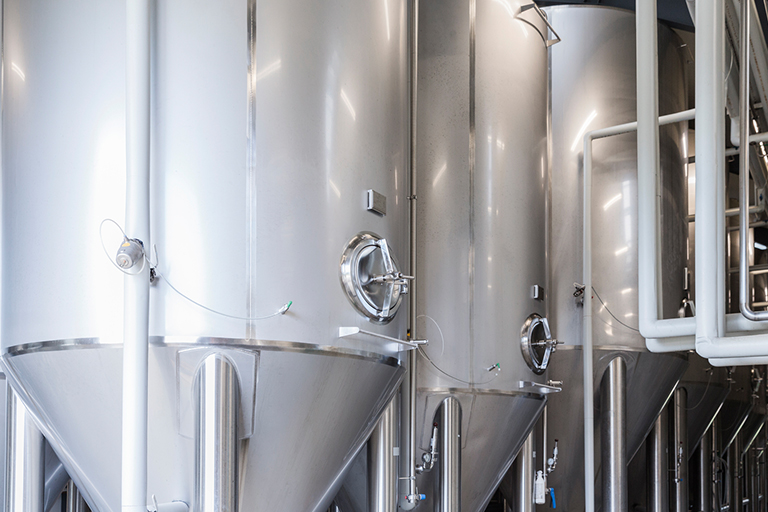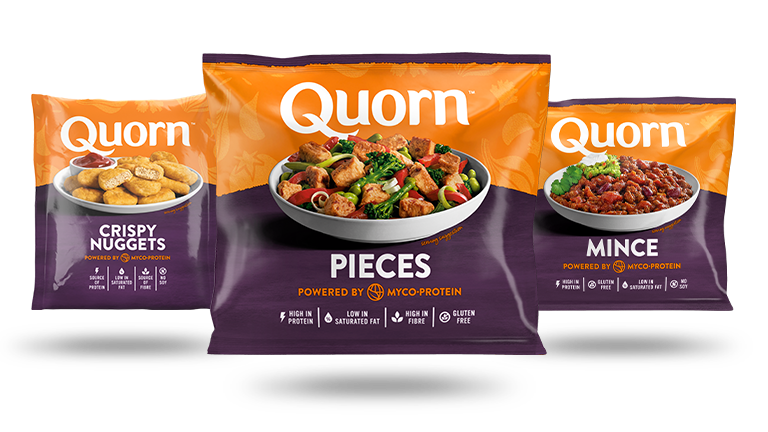What is Quorn and Quorn mycoprotein?
Quorn® is an alternative protein source made of Quorn mycoprotein, a unique and nutritious food source that can form part of a balanced diet while supporting the health of the planet. ‘Myco’ is derived from the Greek root μύκης (mykes), meaning fungus. Quorn mycoprotein is high in protein, a complete source of amino acids, high in fibre, low in total fat, contains no cholesterol, and is a source of key micronutrients such as choline, selenium and zinc.
What is Quorn mycoprotein?
Quorn is made of Quorn mycoprotein, a vegan protein source that can contribute towards a healthy and balanced diet. Quorn mycoprotein is suitable for flexitarians, vegetarians and vegans alike as well as anyone looking to reduce their meat consumption or dietary impact on the environment. The main ingredient of Quorn mycoprotein is Fusarium venenatum, an ascomycete, which is a type of fungus that naturally occurs in the soil.
Did you know fungi are a separate kingdom to plants and animals? Watch this short video to find out more!
How is Quorn mycoprotein for Quorn products made?
The process of making Quorn begins here. Quorn mycoprotein is made in air-lift fermenters, where it grows on high-grade carbohydrates – derived from maize and wheat. These fermenters are 40 metres high and run continuously for 5 weeks at a time.

Step 1
The fermenter is sterilised and filled with water containing glucose and various essential salts. Then, a few spores (equivalent to seeds in the plant kingdom) of Fusarium venenatum, the fungus at the heart of Quorn mycoprotein, is ‘woken up’ by growing it in a small conical flask with a little glucose and salts solution, before it is introduced into the main fermenter.
Step 2
Once the organism has begun to grow, a continuous feed of nutrients including; glucose, ammonium, potassium, magnesium and phosphate, as well as trace elements is added. The pH balance, temperature, nutrient concentration and oxygen are all constantly adjusted in order to achieve the optimum growth rate.
Step 3
To avoid the fermenter overflowing, the fermented broth containing the fungus is continuously taken off at exactly the same rate as the feeds are added, ensuring that the fermenter can produce for weeks at a time. The harvested broth is gently heated, and the fungal mycelium formed in the fermenter vessel is harvested by centrifugation to give the Quorn's mycoprotein paste, or ‘dough’. During this heating step, the ribonucleic acids are broken down and dissolved into the surrounding liquids, where they remain after the centrifugation. Interestingly, these can be dried and used as a flavouring, a bit like the way that yeast extract is produced!
Step 4
The Quorn mycoprotein is then seasoned and mixed with a little free-range egg, or plant protein in vegan products, to help bind the mix. It is then steam cooked for about 30 minutes, and chilled, before being shaped for a variety of different products.
Step 5
The product is then frozen. This is a crucial step in the process because the controlled growth of the ice crystals helps to push the fibres of the dough together, creating bundles that give Quorn mycoprotein its meat-like texture.
The magic of mycoprotein
Watch our video to learn more about Quorn mycoprotein. We take a different approach to producing protein, using Quorn mycoprotein in all Quorn products, for the benefit of the planet.
